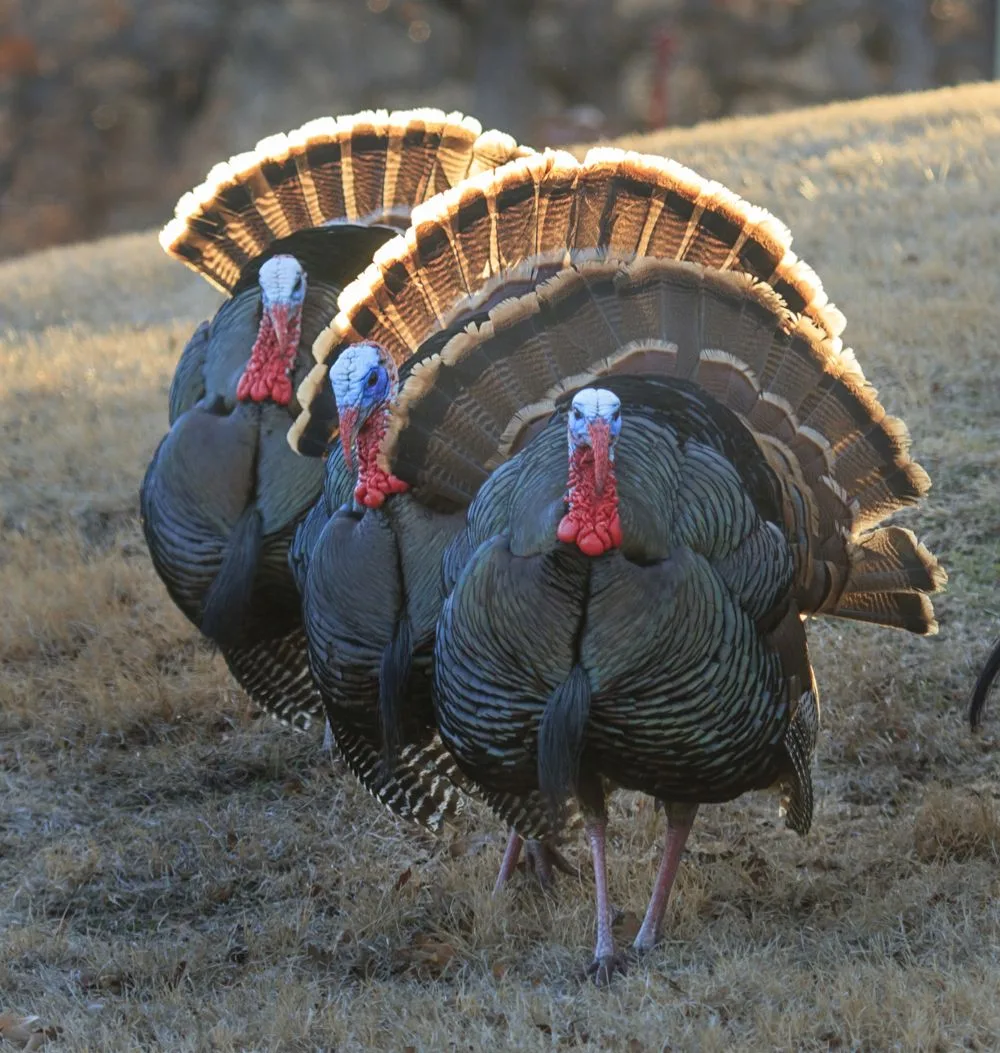The Wild Turkey was almost our first National Bird. Ben Franklin nominated this amazing critter instead of the Bald Eagle. Turkeys fed a generation of newcomers to North America and symbolized the strengths of a new nation.
Turkeys are smart, have great eyesight, adaptable, strong fighters against predators, and are survivors. Early American forests were full of giant mature trees. This meant open spaces below the canopy of leaves. Acorns and mast were available for critters that could gobble them up.
Deer and big game populations were less abundant in the eastern states. These critters preferred prairies and edges of forests. The original forests were so dense that a squirrel could jump from tree to tree until the Mississippi River.
Early hunters became master Turkey Hunters. Most used wing bone calls to lure the birds into range. There were no hunting seasons or limits. Despite the heavy hunting pressure, Turkeys survived.
When the new pioneers began clearing fields and forests, the turkeys adapted. Now they feed on grasshoppers and other insects. Small, forested plots allowed areas to roost. Deer populations surged as their preferred habitat expanded.
Eventually, because of no management policy, all wildlife became threatened. Hunters organized to protect and manage the wild game that they loved. Domestic critters and better farming allowed for self-subsistence instead of constant hunting.

Montana was not a natural home for Turkeys. Merriam turkeys are common in the state and have been around for centuries, but in limited numbers. The southern counties were common turkey haunts until a major winter said otherwise. Eastern turkeys have been introduced into Big Sky Country as well. These, more durable birds have found new homes in Kalispell and NE Montana.
Merriam turkeys have also been stocked across the state and are adapting well. History suggests that Turkeys may have been native to South America and were brought north by migrating Native Peoples. Today you can find wild turkeys that take over a farm and annoy the landowners. These birds are more domesticated.
Wild turkeys are a different critter. They have a beautiful, feathered body that makes for excellent camouflage. Their social order protects offspring. A wild gobbler can easily fend off coyotes and Great Horned Owls using their sharp spurs and strong wings. Turkeys can spot an eyeblink at one hundred yards and sneak around the land like ghosts. If a turkey had a sense of smell as good as an elk, you would never get into gun range.
Spring Gobbler hunting is the same as Fall archery season for Bull elk. That strategy and excitement are the same. Both critters are survivors and can smell a booger in a second. Getting into archery or shotgun range, 25 yards or closer, is extremely tough.
One dramatic difference is that a hunter can easily shoulder a gobbler out of the forest that weighs 25 lbs. A bull elk can weigh over 800 lbs.
When God created a Turkey, he really paid attention to detail, until he got to their heads. A turkey head is incredibly warty, pimply, ugly, and untouchable.
Cluck, purr, and Gobble!
Montana Grant





